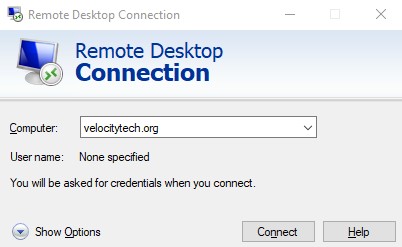Can't edit virtual machines once you upgrade to VMware 5.5 ESX and a virtual machine version 10
November 30, 2013Cisco ASDM will not launch with version 7.x
January 27, 2014If you have recently ran across an issue where users are unable to manage a distribution group in Outlook or Exchange even though you have made them owners of this group it is by design. By default users in Exchange 2013 are assigned to the “Default Role Assignment Policy”. This role does not have the permissions to edit group ownership even if they are owner’s of the distribution group. In order to fix this you must login to the ECP by going to https://servername/ecp Once here go into the permissions on the left hand side.
![]()
Click on admin roles in my instance I just assigned my user Recipient Management rights since they are an administrator level employee. This resolves the issue.

If all of the following hold true then you can also just download and run this Powershell script.
- I want my users to be able to manage distribution groups they own.
- I don’t want them to be able to create distribution groups.
- I don’t want them to be able to remove distribution groups even if they do own them.
# Script for creating a Role that can manage distributions groups but can’t create new ones
#
#################################################################################
#
# The sample scripts are not supported under any Microsoft standard support
# program or service. The sample scripts are provided AS IS without warranty
# of any kind. Microsoft further disclaims all implied warranties including, without
# limitation, any implied warranties of merchantability or of fitness for a particular
# purpose. The entire risk arising out of the use or performance of the sample scripts
# and documentation remains with you. In no event shall Microsoft, its authors, or
# anyone else involved in the creation, production, or delivery of the scripts be liable
# for any damages whatsoever (including, without limitation, damages for loss of business
# profits, business interruption, loss of business information, or other pecuniary loss)
# arising out of the use of or inability to use the sample scripts or documentation,
# even if Microsoft has been advised of the possibility of such damages
#
#################################################################################
#
# Written by Matthew Byrd
# Matbyrd@microsoft.com
# Last Updated 10.15.09
# Parameter to get a different name than default for the new Role
Param([string]$name=”MyDistributionGroupsManagement”,[string]$policy=”Default Role Assignment Policy”,[switch]$creategroup,[switch]$removegroup)
# Help Function
Function Show-Help {
”
This script is will create or manage a management role designed to allow users to modify groups that they already own
but not create or remove any new distribution groups.
Switches:
-name Name of the managment role you want to create or modify
Defaults to: `”MyDistributionGroupsManagmenet`”
-policy Name of the Role Policy you want to assign the role to
Defaults to: `”Default Role Assignement Policy`”
-creategroup Adds or Removes the ability of the Role to Create DLs
-removegroup Adds or Removes the ability of the Role to Remove DLs
Examples:
——————————————–
This will Use the default names and Policy and will create a role that cannot
Create or remove groups but can still modify them. If the role already exists
It will modify it by removing or adding the abiltity to create and remove groups
based on the current state.
Manage-GroupManagementRole -CreateGroup -RemoveGroup
”
}
# Function to modify a role by removing or adding Role Entries
# If no action is passed we assume remove
# $roleentry should be in the form RoleRoleentry e.g. MyRoleNew-DistributionGroup
Function ModifyRole {
Param($roleenty,$action)
Switch ($action){
Add {Add-ManagementRoleEntry $roleenty -confirm:$false}
Remove {Remove-ManagementRoleEntry $roleenty -confirm:$false}
Default {Remove-ManagementRoleEntry $roleenty -confirm:$false}
}
}
If (($creategroup -eq $false) -and ($removegroup -eq $false)){
Show-Help
exit
}
# Test if we have a role that already has that name
If (([bool](Get-Managementrole $name -erroraction Silentlycontinue)) -eq $true){
Write-Warning “Found a Role with Name: $name”
Write-Warning “Trying to Modify Existing Role”
}
Else {
# Create the new Management Role
Write-Host “Creating Managmenet Role $name”
New-ManagementRole -name $name -parent MyDistributionGroups
}
# Determine if we have the New and Remove Role Entries on the Role Already
$create = [bool](Get-managementroleentry $nameNew-DistributionGroup -erroraction Silentlycontinue)
$remove = [bool](Get-managementroleentry $nameRemove-DistributionGroup -erroraction Silentlycontinue)
# If we have the switch CreateGroup add or remove the RoleEntry for New-DistributionGroup
If ($creategroup -eq $true){
If ($create -eq $true){ModifyRole $nameNew-DistributionGroup Remove;Write-Host “Removing ability to create distribution Groups from $name”}
elseif ($create -eq $false) {ModifyRole $nameNew-DistributionGroup Add;Write-Host “Adding ability to create distribution Groups to $name”}
}
# If we have the switch RemoveGroup add or remove the RoleEntry for New-DistributionGroup
If ($removegroup -eq $true){
If ($remove -eq $true){ModifyRole $nameRemove-DistributionGroup Remove;Write-Host “Removing ability to create distribution Groups from $name”}
elseif ($remove -eq $false) {ModifyRole $nameRemove-DistributionGroup Add;Write-Host “Adding ability to create distribution Groups to $name”}
}
# Test if we have the assignment for the Role and Policy
# If we do … write a warning
# If not create a new assignment
If (([bool](get-managementroleassignment $name-$policy -erroraction SilentlyContinue)) -eq $true){
Write-Warning “Found Existing Role Assignment: $name-$policy”
Write-Warning “Making no modifications to Role Assignments”
}
Else {
# Assign the Role to the Role Policy
Write-Host “Creating Managmenet Role Assignment $name-$policy”
New-ManagementRoleAssignment -name ($name + “-” + $policy) -role $name -policy $policy
}


